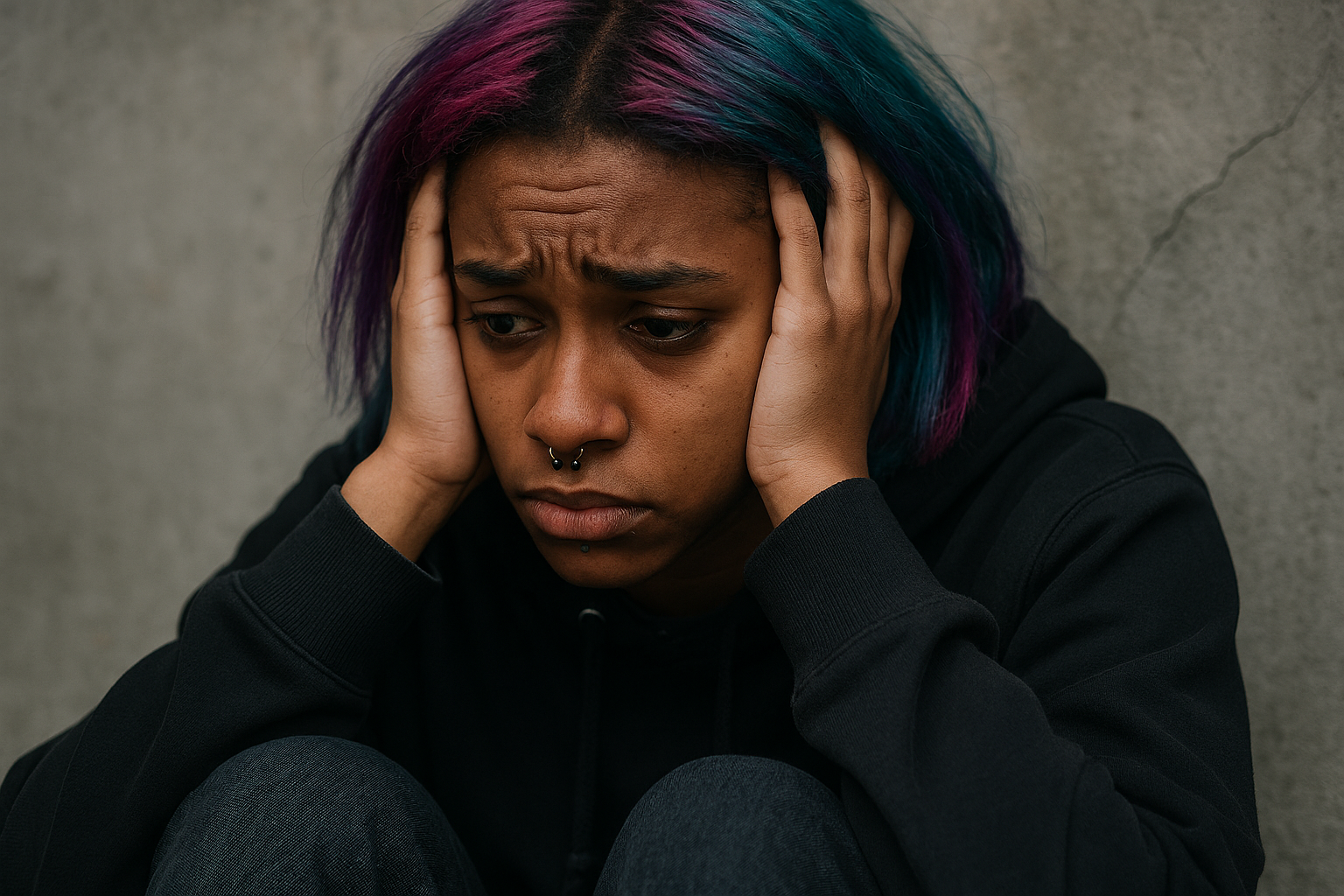Question About Treatment
From Wellness to Pressure: Understanding the Teen-Wellness Paradox

My son was always the “healthy one.” He drank green smoothies, meditated before school, and followed fitness influencers who preached balance and self-care. At first, I was proud. In a world full of distractions, he seemed focused—disciplined, even. But slowly, I started noticing cracks beneath the surface.
He became rigid. Meals had to be “clean.” Workouts couldn’t be skipped. His morning routine was sacred—any disruption left him irritable and anxious. He stopped hanging out with friends who didn’t share his wellness habits. And when I asked if he was okay, he’d say, “I’m just trying to stay on track.”
But it wasn’t just about staying on track. It was about staying in control.
One night, I overheard him crying in his room. He didn’t know I was listening. He said he felt like a failure—like he wasn’t doing enough to be “well.” That word hit me hard. Well. It was supposed to mean healthy, whole, balanced. But for him, it had become a burden.
We talked. Really talked. He admitted that the pressure to be calm, fit, and emotionally perfect was exhausting. That he felt like he couldn’t show sadness or stress because it would mean he wasn’t “doing wellness right.” That every time he saw a post about someone’s perfect morning routine or yoga flow, he felt behind.
That’s when I learned about the teen-wellness paradox—how the pursuit of wellness can actually fuel anxiety and self-doubt. We reached out to Sierra Health + Wellness in Roseville. Their Adolescent Program didn’t just treat symptoms—it helped my son unpack the emotional weight behind his routines. He learned that wellness isn’t a checklist. It’s not about perfection. It’s about balance, authenticity, and being okay with not being okay.
Through therapy, expressive arts, and mindfulness that wasn’t performative, he started to reconnect with himself. He still meditates sometimes. He still eats healthy. But now, he also laughs more. Sleeps in occasionally. Admits when he’s overwhelmed. And that, to me, is real wellness.
If you’re a parent watching your teen struggle under the weight of “being well,” know this: you’re not alone. And neither are they. Help is out there—and it starts with letting go of the ideal, and embracing the human.
Understanding the Teen-Wellness Paradox
In recent years, wellness culture—promoting mindfulness, self-care, and holistic health—has surged in popularity among teenagers. However, this well-intentioned movement has a paradoxical underside: for some adolescents, the pursuit of wellness becomes another source of stress and self-critique. Understanding this “teen-wellness paradox” is essential for clinicians, caregivers, and educators.
At Sierra Health + Wellness, our Adolescent Program at the Roseville facility offers clinically informed support tailored to help teens navigate these pressures—addressing both wellness-related stress and underlying mental health concerns.
The wellness paradox refers to the way wellness imperatives can unintentionally generate anxiety. Instead of easing stress, the pressure to “be well” can intensify teen expectations: to eat “perfectly,” to maintain flawless digital lives, to appear always calm or motivated. These ideals are often unrealistic and isolating.
Research on cultural contexts in adolescent anxiety highlights how systemic pressures embedded in modern wellness narratives can paradoxically drive anxiety through ambivalence, identity disconnection, and societal mismatch PMC.
In adolescence, when identity is still forming, wellness ideals can distort self-assessment, leading to self-optimization at the expense of emotional authenticity.
Signs & Symptoms of the Teen-Wellness Paradox
Clinically, parents and practitioners may notice these emerging patterns:
-
Perfectionism in Wellness Behaviors
Teens insist on rigid routines: eating only “clean” foods, exercising excessively, or following wellness influencers as rulebooks. When disrupted, they may feel guilt or shame. -
Social Comparison & Inferiority
Constant exposure to curated wellness content fosters comparison—”I’m not practicing yoga enough,” or “My morning routine isn’t calm enough.” -
Emotional Suppression
In striving to maintain a “well” image, teens may ignore or dismiss negative emotions—anxiety, sadness, or loneliness. -
Neglect of Real Self-Care
Paradoxically, the pursuit of idealized wellness can replace practical self-care, resulting in poor sleep, high stress, or untreated psychological distress. -
Identity Conflict
Teens may feel torn between performing wellness and owning their emotional truths.
Clinical Implications & What Often Gets Missed
-
Emotional Suppression Over Substance Use
Rather than developing coping strategies, teens may convert distress into rigid routines—masking anxiety rather than addressing it directly. -
Anxiety Reinforced by the Ideal of Control
When wellness becomes a daily checklist, inevitably unmet standards exacerbate feelings of failure or anxiety. -
Disconnection from Support
Teens may hesitate to disclose emotional difficulty, fearing it undermines their “healthy” image. -
Risk of Co-Occurring Disorders
Pressure and stress from health perfectionism can co-exist with anxiety or depressive disorders—requiring integrated, dual-focus intervention.
Therapeutic Strategies and Treatment Approaches
1. Reframing Wellness as Balance, Not Ideal
-
Promote mental wellness that normalizes negative emotions as part of growth.
-
Encourage realistic, flexible wellness plans (e.g., enjoyable movement over rigorous routines).
2. Emotion-Focused Evidence-Based Therapies
-
Employ Cognitive Behavioral Therapy (CBT) to address distorted beliefs about perfection.
-
Use Dialectical Behavior Therapy (DBT) to foster emotional acceptance and stress tolerance.
3. Authentic Self-Expression Through Therapies
-
Integrate mindfulness and expressive arts to improve emotional clarity.
-
Offer creative modalities that validate non-performance-based self-care.
4. Psychoeducation for Teens and Parents
-
Educate families on wellness paradox dynamics: knowing “healthy distractions” can mask anxiety.
-
Teach boundaries with social media and wellness messaging, promoting digital mental hygiene.
5. Holistic Care in a Developmentally Sensitive Environment
-
At Sierra Health + Wellness’ Adolescent Program, teens experience tailored therapy in an environment that encourages authentic wellness—supporting them to move beyond indoctrinated wellness ideals into emotionally balanced living.
How Sierra Health + Wellness Addresses the Teen-Wellness Paradox
Located at our Roseville adolescent facility, Sierra’s Adolescent Program provides interventions for teens experiencing anxiety, identity conflict, or emotional turbulence exacerbated by wellness pressures. Key elements include:
-
A developmentally attuned blend of CBT, DBT, mindfulness, and expressive therapies
-
A supportive setting where teens can explore emotional complexity without performance pressure
-
Family involvement and psychoeducation to rebuild healthy emotional environments
-
Aftercare and teletherapy support to maintain growth beyond in-person programming
Conclusion
While wellness culture often promotes positive habits, the teen-wellness paradox shows that when perfectionism infiltrates self-care, mental health can suffer. At Sierra Health + Wellness, we offer adolescent-centered, clinically grounded care that redefines wellness as emotional resilience, authenticity, and balance—not unattainable ideals.
If you notice your teen struggling under the weight of wellness expectations, reach out to explore how our Adolescent Program at the Roseville facility can help them rediscover well-being that’s real, sustainable, and human.

 9985 Folsom Blvd, Sacramento CA 95827
9985 Folsom Blvd, Sacramento CA 95827 (866) 303-6275
(866) 303-6275

